Comments / Questions (19)
![]() Ginette wrote:
Ginette wrote:
Bonjour, pour avoir une couverture plus grande en largeur, combien de mailles dois-je ajouter au montage. Merci et bonne continuation!
25.01.2023 - 00:51DROPS Design answered:
Bonjour Ginette, ajoutez 30 mailles en l'air pour avoir un motif de *-* en plus à répéter en largeur - réalisez votre échantillon pour calculer le nombre de mailles à monter en plus en fonction de la largeur souhaitée. Bon crochet!
25.01.2023 - 12:06
![]() Therese wrote:
Therese wrote:
Ska göra halva med 91 lm. Hur avslutar jag då varv 1 innan jag vänder? Jag har börjat med att sticka 1st i 4e lm. Sedan gör jag allt som står förutom att upprepa endast 2 ggr där det står 4ggr. Ska jag sedan avsluta med att hoppa 4lm & avsluta med 1st i alla sista 13 lm eller som min mor tror: Dvs, det avslutas med 1 stolpe i varje lm i de 11 följande förutom den sista, som du virkar 2 st i?
29.03.2022 - 05:44
![]() Janne Knutsen wrote:
Janne Knutsen wrote:
Hei. Jeg har også heklet dette teppe i Air, og det ble nydelig. Byttet litt på fargevalget. Når teppet var ferdig hadde jeg også 8 nøster igjen. Litt kjipt at det ikke går å returnere, men jeg får bruke garnet til diverse andre småprosjekter (pannebånd, putetrekk o.l ) Teppet ble likevel aldeles nydelig, og dersom tiden streker til, strikker jeg nok et nytt med andre farger.
10.08.2021 - 17:06
![]() Ruth Keller Tingleff wrote:
Ruth Keller Tingleff wrote:
Hej Ruth, prøv vores garnomregner, vælg DROPS Air, vælg 1500g og vælg 1 tråd, nu får du de alternativer op som findes. Jeg forstår ikke rigtig udregningen. Betyder det at jeg kan erstatte 1500 g Drops Air med - 804g DROPS Brushed Alpaca Silk ?
06.04.2021 - 23:12DROPS Design answered:
Hej Ruth, ja det stemmer, DROPS Brushed Alpaca Silk er lettere og vil selvfølgelig give et andet udtryk. God fornøjelse!
07.04.2021 - 08:41
![]() Ruth Keller Tingleff wrote:
Ruth Keller Tingleff wrote:
Er det rigtigt at man skal bruge 1500 g garn til dette tæppe? Jeg synes at det bliver voldsomt dyrt at lave. Hvilket garnalternativ kan jeg bruge?
28.03.2021 - 14:52DROPS Design answered:
Hej Ruth, prøv vores garnomregner, vælg DROPS Air, vælg 1500g og vælg 1 tråd, nu får du de alternativer op som findes :)
06.04.2021 - 15:59
![]() Ida wrote:
Ida wrote:
Hei, jos haluaa tehdä peitosta leveämmän, paljonko silmukoita pitää lisätä, jotta menee tasan?
11.09.2019 - 21:08DROPS Design answered:
Hei, voit tehdä peitosta leveämmän lisäämällä työhön toistettavassa mallikerrassa oleva silmukkamäärä. Eli yhdessä mallikerrassa on 30 silmukkaa, voit lisätä esim. 30, 60 tai 90 silmukkaa.
19.12.2019 - 14:01
![]() Elisabeth Bredeg wrote:
Elisabeth Bredeg wrote:
Hei Jeg har nettopp begynt på teppet, men får ikke målene som er oppgitt til å stemme. Mitt blir bredere, ca 140 cm. Jeg har den heklefastheten som er oppgitt. Når bredden består av 130 st og 10 cm skal være 9 staver, stemmer det ikke med de oppgitte 105 cm?
05.10.2018 - 11:18
![]() Tanja wrote:
Tanja wrote:
Er det ikke feil på mengde av materialer? Jeg har bestilt Air 300 g i hver farge og når teppen er ferdig har jeg 8 nøster til. Hvordan kan jeg returnere de 8 nøster? (brukte den linken som står nederst i oppskriften "bestil garn").
05.02.2018 - 14:19DROPS Design answered:
Hei Tanja. Det høres veldig merkelig ut. Har du overholdt heklefastheten som er oppgitt i oppskriften? Ta evnt kontakt med den butikken du bestilte ifra (det vil du se på din ordre). Ellers så er DROPS Air utrolig populært om dagen og vanskelig å få tak i. Du kan evnt prøve å høre på noen strikke/hekle nettsider om noen er interessert i garnet. mvh Drops design
06.02.2018 - 08:53
![]() Maxine wrote:
Maxine wrote:
Have just learnt to crotchet and I just want to check...it says to start you use 2 strands of the Air wool in white....do I use 2 strands in chosen colours for the whole blanket? Thank you
11.05.2017 - 07:08DROPS Design answered:
Dear Maxine, that's correct, you will crochet with 2 strands all the way - see tension info under tab "Materials". Happy crocheting!
11.05.2017 - 09:15
![]() Mª Carmen Pinto Barrera wrote:
Mª Carmen Pinto Barrera wrote:
¿Todas las vueltas es con doble hilo?¿es la misma cantidad de hilo 300g por color o hay que poner el doble 600g por color para la medida de la manta? Gracias
16.11.2016 - 14:48DROPS Design answered:
Hola MªCarmen, La manta entera se trabaja con hilo doble. La cantidad de material necesario para hacer la manta que se indica en el patrón es la correcta. No hay que usar el doble.
18.11.2016 - 09:06
Snowy Field#snowyfieldblanket |
|
|
|
|
Crochet blanket with zig-zag in 2 strands DROPS Air.
DROPS 163-19 |
|
|
CROCHET INFO: 3 ch at beg of row = 1 dc. STRIPES: Then work stripes as follows: 3 rows off white 2 rows fog 1 row black 3 rows medium gray 2 rows pearl gray 1 row off white 3 rows fog 2 rows black 1 row medium gray 3 rows pearl gray 2 rows off white 1 row fog 3 rows black 2 rows medium gray 1 row pearl gray Repeat stripes 2 times vertically, then work the first 11 rows one more time = 71 rows in total. ---------------------------------------------------------- BLANKET: Work with 2 strands Air. READ CROCHET INFO! Work 152 loose ch on hook size 8 mm / L/11 with 2 strands off white. Work STRIPES - see explanation above. ROW 1: Work 1 dc in 4th ch from hook (= 2 dc), 1 dc in each of the next 11 ch, * skip ch 4, 1 dc in each of the next 13 ch, ch 3, 1 dc in each of the next 13 ch *, repeat from *-* 4 times in total, skip 4 ch and finish with 1 dc in each of the last 13 ch = 130 dc. ROW 2: ch 3, 1 dc in first dc, 2 dc in next dc, 1 dc in each of the next 9 dc, * skip 4 dc, 1 dc in each of the next 11 dc, 2 dc around ch-space, ch 3, 2 dc around ch-space, 1 dc in each of the next 11 dc *, repeat from *-* 4 times in total, skip 4 dc, finish with 1 dc in each of the next 9 dc and 2 dc in each of the last 2 dc = 130 dc. Repeat 2nd row until stripes are done (= 71 rows) or desired length. REMEMBER THE CROCHET GAUGE! Fasten off. |
|
Have you finished this pattern?Tag your pictures with #dropspattern #snowyfieldblanket or submit them to the #dropsfan gallery. Do you need help with this pattern?You'll find 5 tutorial videos, a Comments/Questions area and more by visiting the pattern on garnstudio.com. © 1982-2025 DROPS Design A/S. We reserve all rights. This document, including all its sub-sections, has copyrights. Read more about what you can do with our patterns at the bottom of each pattern on our site. |








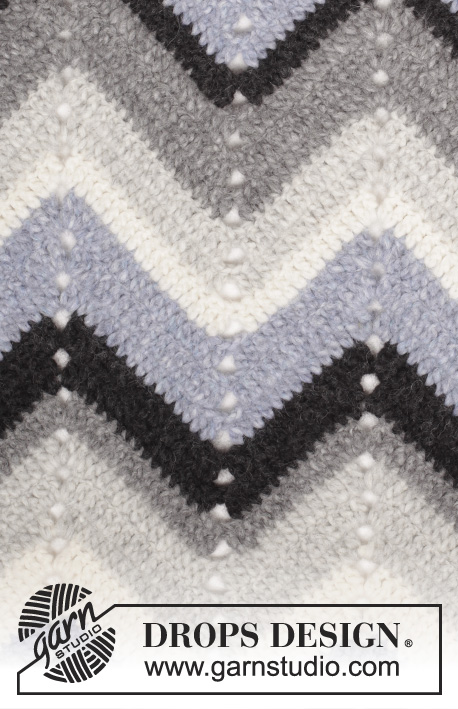
























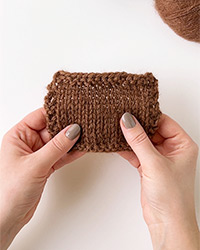
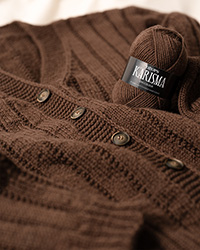
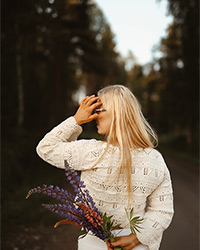

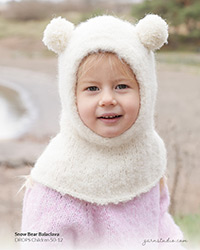
Post a comment to pattern DROPS 163-19
We would love to hear what you have to say about this pattern!
If you want to leave a question, please make sure you select the correct category in the form below, to speed up the answering process. Required fields are marked *.